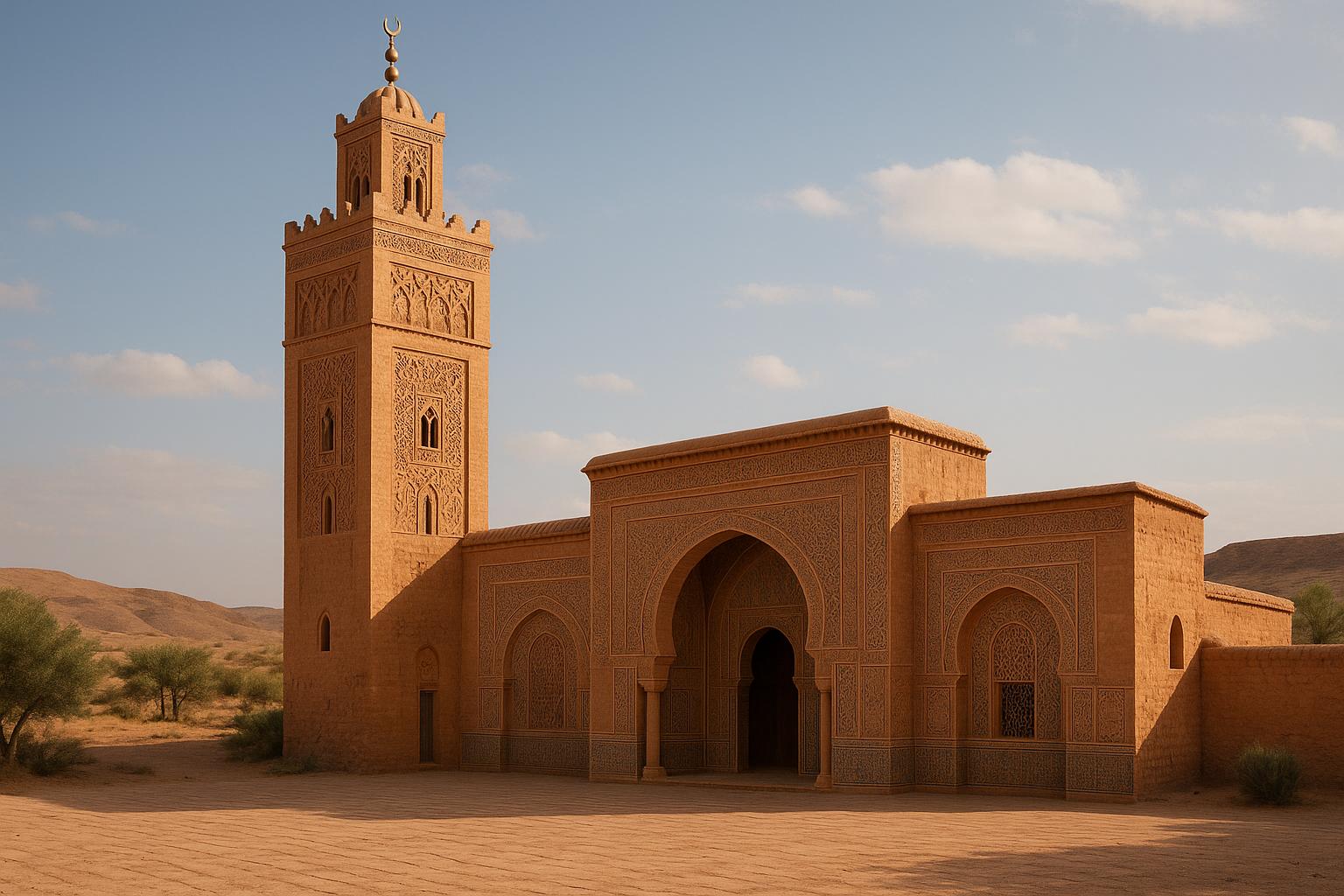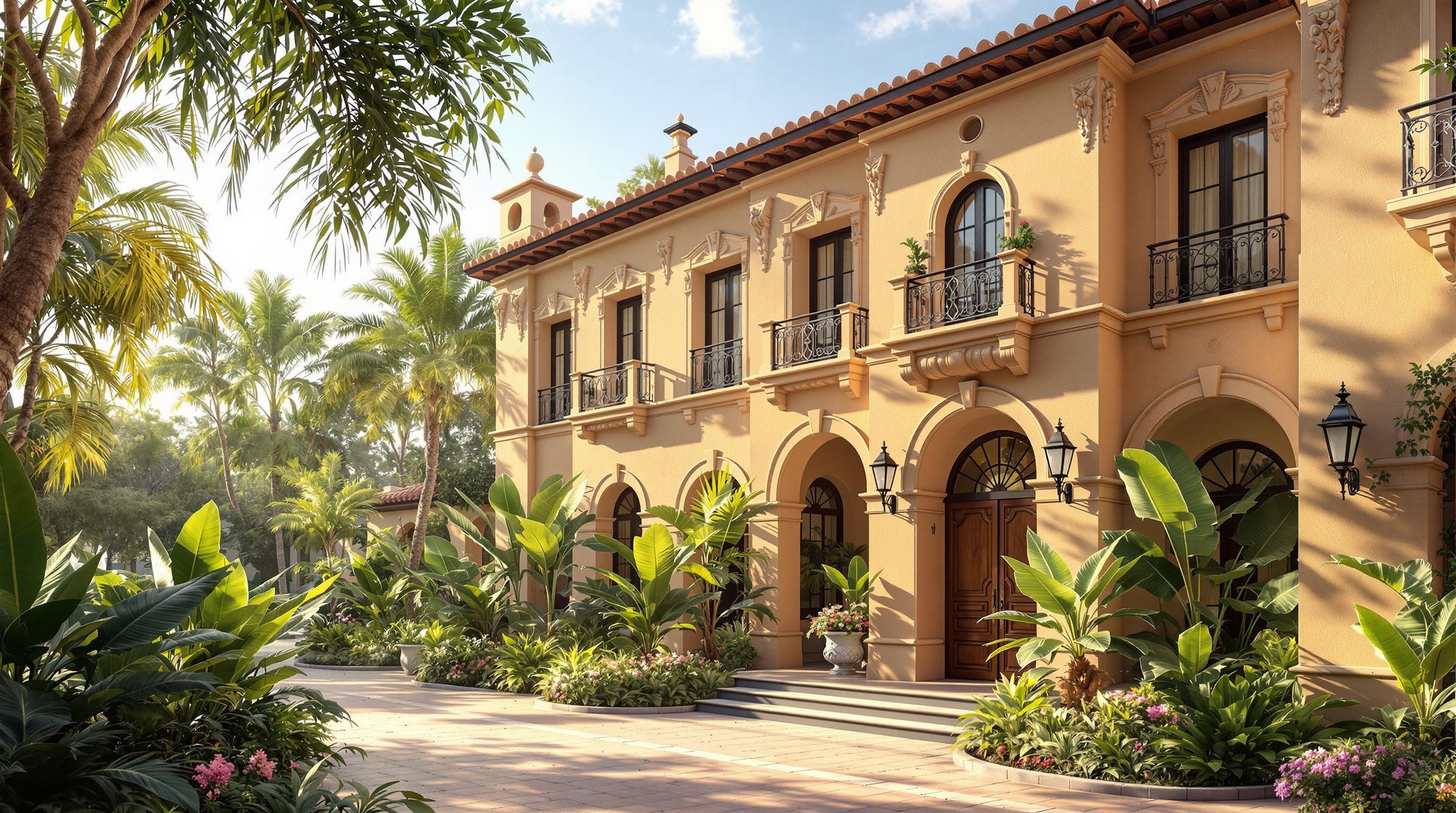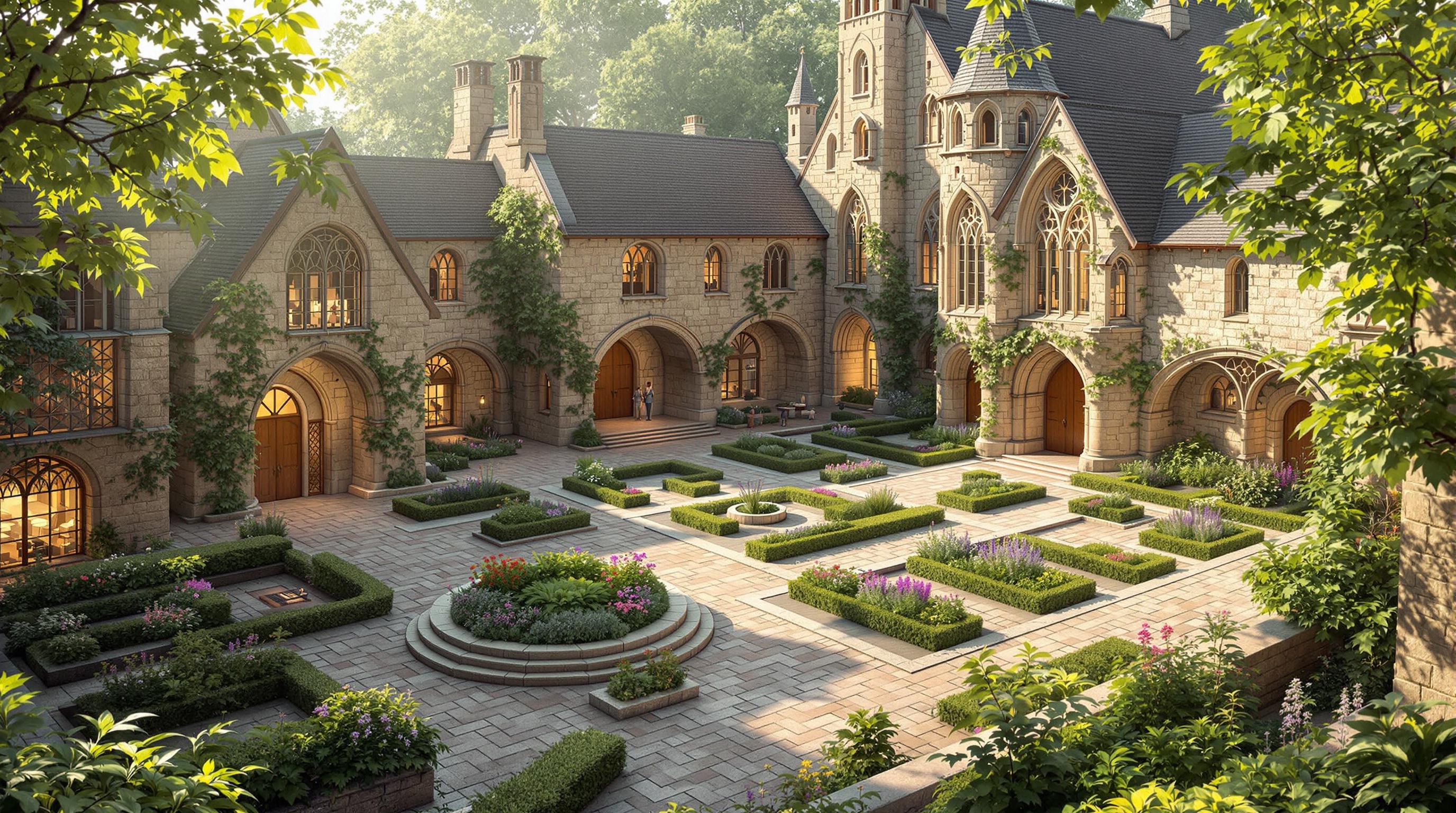Dive into the enchanting world of French architecture, a journey spanning over 2000 years that showcases a blend of creativity, luxury, and innovation. From the sturdy Gallo-Roman structures to the modern marvels, French architecture embodies artistic excellence. This visual journey explores:
- Historical Evolution: From ancient Gallo-Roman designs to Gothic, Renaissance, Baroque, Rococo, Neoclassical, and modern architectural innovations.
- Regional Styles: Discover unique styles like Maison à Colombage in Alsace, Longère homes in Normandy, and Mas farmhouses in Provence, each telling a story of local life and culture.
- Material Palette: Learn about the preferred materials like limestone and granite that have shaped the iconic French landscape.
- Influential Figures: Visionaries like Jules Hardouin-Mansart and Auguste Perret, whose innovative designs have left a lasting legacy.
- Global Influence: See how French architecture has inspired buildings worldwide, from the United States to the Sydney Opera House.
By the end of this journey, you'll understand why French architecture is celebrated for its diversity, beauty, and enduring influence on global design trends.
Renaissance to Rococo: Extravagance and Ornamentation
When French nobles got more powerful, architecture changed to the fancy Italian Renaissance style. Kings and nobles tried to outdo each other with luxurious châteaux that had classical designs and lots of decorations. This reached a high point with the Baroque and Rococo styles, with places like Versailles covered in gold and fancy designs.
Neoclassical to Modernism: Symmetry and Structural Innovation
After the Revolution, French architecture went back to the orderly Neoclassical style, seen in the Panthéon. Then, under Napoleon III and Georges-Eugène Haussmann, Paris got a big makeover. By the late 1800s, the Eiffel Tower and early modern buildings started focusing more on innovative structures than just decorations. From Le Corbusier to I.M. Pei, modern French landmarks keep having a big impact around the world.
Exploring Distinct Regional Architectural Styles
France is full of different styles of buildings, depending on where you are in the country. From wooden houses in Alsace to stone farmhouses in Provence, each area has its own special look that tells you something about its history and way of life.
Maison à Colombage
In the north of France, like Alsace, Normandy, and some parts of the Loire Valley, you'll find houses with wooden frames called Maison à Colombage. They have spaces filled with brick or a mix of lime, straw, and clay. These houses were easy and practical for people to build long ago because wood was plentiful. Over the years, these houses might lean a bit because the wood shifts, but that's part of their charm. Towns like Riquewihr and Strasbourg have great examples of these old wooden houses.
Longère
The Longère is a long, narrow house common in Normandy and Brittany. It's made of stone and wood, and it's built to let in as much sun as possible while blocking cold northern winds. These houses often have two floors with animals and storage below, people living in the middle, and hay up top. This design keeps the living areas warm and away from any smells from the animals. You can still see groups of these houses in Normandy today.
Mas
In the south of France, there's a type of farmhouse called a Mas. These are low, strong houses with red roofs, built to fit right into the countryside, from the hills to the flat lands. They were designed to be self-sufficient, with places for animals, gardens, and even silk production. The thick stone walls and small windows keep the inside cool in summer and warm in winter. The family lived upstairs, above the animals. These houses often have brightly colored shutters that look beautiful against the stone walls and vine-covered entrances. They really capture the dreamy feel of Provence.
The Material Palette: Building Blocks of French Architecture
Limestone
Limestone is a popular building material in France, especially in places like Burgundy. It's a soft, light-colored rock that has been used a lot in famous buildings, such as the big and fancy houses in the Loire Valley like Château de Chambord.
This rock is easy to shape into different designs because it's not too hard. That's why you see it used for fancy parts of buildings like the edges, columns, and decorations. When it's first cut, limestone looks very white and stands out against darker roofs. But as it ages, it changes color to a warm golden or a gray shade, which makes buildings look even nicer.
Limestone is smooth and perfect for creating the big, round arches and balanced designs you see in old French castles. Today, it's still used in new ways, like in the modern Louvre Pyramid, where it's cut into thin pieces to make a cool contrast with the glass.
Granite
Granite is a tough rock found a lot in Brittany and the French Basque Country. It's really strong and lasts a long time, which is great for buildings near the sea that have to deal with harsh weather. This rock is usually left as is, showing off its natural rough look and speckled color that adds a rustic feel to homes and old stone structures.
Modern builders also like granite for its solid look. For example, the famous architect Le Corbusier used it to make a church look powerful and heavy. The church's walls are made with big, rough pieces of granite, connecting the building to the local culture and the natural surroundings.
Both limestone and granite show how French builders are smart about using local rocks not just to make buildings strong, but to give each area its own special look. These materials are more than just tools; they help tell the story of the places they're used in.
Influential Figures: Visionaries of Form and Function
This part talks about some key people who have had a big impact on French architecture over the years. Their creative ideas and skill in designing both the looks and the practical parts of buildings have made some of France's most famous places stand out.
Jules Hardouin-Mansart
Jules Hardouin-Mansart (1646-1708) was a big deal in French architecture in the 17th century. He worked for King Louis XIV and was known for designing fancy palaces with a special kind of roof.
- Worked on making Versailles bigger, like adding the Hall of Mirrors, and helped make the fancy French Baroque style popular
- Came up with the mansard roof, which added extra room in buildings
- Designed Les Invalides, which was both grand and practical, serving as a church and hospital
- His work under King Louis XIV set the style for French buildings of that time, mixing beauty with a sense of power
Mansart was known for his ability to mix fancy decoration with smart building techniques, which became a key part of the French Baroque period.
Auguste Perret
Auguste Perret (1874-1954) was a front-runner in modern architecture who really knew how to use reinforced concrete. His work on rebuilding Le Havre after the war shows off his skill.
- Was really good at using concrete to make buildings that were both slim and strong
- Designed important Art Deco buildings like the Théâtre des Champs-Élysées
- Took charge of rebuilding Le Havre after the war, which is now a UNESCO site
- His concrete buildings look like ships and waves, which fits the port city vibe
- His work mixes modern looks with local styles through the use of materials and shapes
Perret moved modern architecture forward with his technical skills and ability to blend new styles with local traditions. His concrete designs are seen in both Paris and Le Havre.
sbb-itb-1be9014
The Global Reach of French Architecture
French architecture, with its beautiful designs and creative ideas, has influenced buildings all around the world.
Neoclassical Design in America
When the United States was just starting, people like Thomas Jefferson looked to French Neoclassical buildings for inspiration. The U.S. Capitol, with its big dome and rows of columns, was designed to look like the Panthéon in Paris. This shows how French ideas helped shape American buildings from the start.
Gothic Revival Structures Across Europe
French Gothic buildings are famous for their tall spires and detailed decorations. In the 1800s, many places in Europe built new buildings in this style, inspired by French cathedrals like Notre-Dame de Paris. Examples include the Palace of Westminster in London and St. Patrick's Cathedral in New York, which both have the fancy spires and glass work found in French Gothic design.
Global Icons: The Sydney Opera House
The Sydney Opera House in Australia is a modern building that was influenced by French design. When the architect, Jørn Utzon, needed help with the roof's unique shape, a team of French engineers figured it out using math related to French curves. This made the Opera House's roof and shell design famous around the world.
Contemporary French Design Around the World
Lately, French architects like Jean Nouvel and Dominique Perrault have created standout buildings all over, including in Asia, Europe, and North America. They've worked on big projects like the Louvre Abu Dhabi and the National Museum of Qatar. Their work shows that French architectural creativity is still making a big impact today.
Interactive Elements: Create Your Own French-Inspired Designs
This part of the article is all about getting hands-on and playing around with French architectural styles using the tools on ArchitectureHelper.com. It's like a fun mix-and-match game where you can pick different styles, shapes, and materials from various times and places in France to come up with your own unique building designs.
Here's how you can get creative:
Blend Iconic French Styles
- Try mixing parts from different times, like the pointy tops of Gothic churches, the fancy swirls of Baroque decorations, and the sleek lines of modern glass buildings
- Combine features from different areas, like the stone farmhouses of Provence with the timber-framed houses in Normandy
- Put together the grand look of palaces with the simpler beauty of countryside homes
- Think about how city buildings and country homes could look together in a new way
Craft Custom Material Palettes
- Use a mix of rough granite, smooth limestone, and shiny steel
- Choose from local woods, stones, bricks, and clay roof tiles
- Try out different paint colors for the outside of your designs
- Decorate with metal details and colorful window shutters for extra flair
Sculpt Distinctive Roof Profiles
- Design a tall, sharp spire like the ones on Gothic churches
- Make curved roofs with extra space in the attic, like Mansard roofs
- Draw modern shapes like glass pyramids or metal waves
- Think about red tile roofs, domes, small towers, and other cool roof shapes for your dream château
With tools that let you see buildings from all sides and change parts as you like, you can make the house or building you've always wanted. The main thing is to have fun with it! You can also share your French-inspired designs with others on ArchitectureHelper.com to get their thoughts, or just enjoy making your own designs come to life.
Conclusion: A Long Tradition of Creativity and Beauty
French architecture is all about creativity and variety, with different styles seen in various parts of the country and changes over time. Yet, there are some things that all these styles share - a knack for making beautiful things, using a wide range of materials like local stone and wood, and always finding new ways to build better.
From the old times to today, French architects and builders have made buildings that are not only pretty but also smart in design. The tall Gothic cathedrals were a big deal because they were so high and full of light, while the Eiffel Tower by Gustave Eiffel showed how metal could be used in new ways. Modern architects like Le Corbusier and Jean Nouvel kept this spirit of innovation alive with their cool, new buildings.
The big and fancy French châteaux show off the country's love for big, showy buildings. But there's also a simpler charm in the different types of homes across France, from the timbered houses in Alsace to the sturdy farmhouses in Provence. Over time, French design has also influenced buildings all over the world, especially with the French Neoclassicism style.
This rich tradition of architecture continues to inspire and amaze, while also pushing new ideas. French architecture is both a treasure trove of historic buildings and a leader in new design. It brings together beauty, innovation, and skill in a way that's admired all over the world. Its mix of styles from different times and places celebrates creativity and imagination in building.
Related Questions
What is French architecture style?
French architecture style is all about the different types of building designs that have come from France over many years. Some things you might notice in these styles include:
- Buildings that look the same on both sides
- Roofs that are steep and have windows sticking out
- Big, arch-shaped windows and doors
- Lots of fancy details on the outside and inside
- Using materials from the area like limestone and granite
Some well-known French styles are Gothic, Renaissance, Baroque, Rococo, Neoclassical, Beaux-Arts, and Art Nouveau. There are also special styles from certain places, like the timber-framed houses in Alsace.
What style is Parisian architecture?
Paris is famous for its Haussmannian architecture. This style was created by Baron Haussmann, who changed the look of Paris in the 1800s. It includes:
- Big streets and open spaces
- Tall, elegant buildings that look alike
- Balconies, iron railings, and big windows
- Fancy apartment buildings with courtyards inside
This style makes Paris look beautiful and organized.
What is the Francis I style architecture?
The Francis I style is from the French Renaissance. It has:
- Buildings that are the same on both sides with steep roofs
- Lots of chimneys and windows sticking out of the roof
- Fancy brick and stone work
- Windows that stick out from the wall
- Entrances with pointy roofs between round towers
Named after King Francis I, this style mixes old Gothic looks with new Renaissance ideas.
What is Normandy architecture style?
The Normandy style has buildings made of wood and stone with steep roofs and uneven shapes. You'll notice:
- Wood frames with brick in between
- Roofs that are very steep and hang over the edge
- Round towers
- A look that feels like an old country house
- Wood inside the house and beams on the ceiling
This style gives a cozy, old-world feel, taking inspiration from medieval times.


